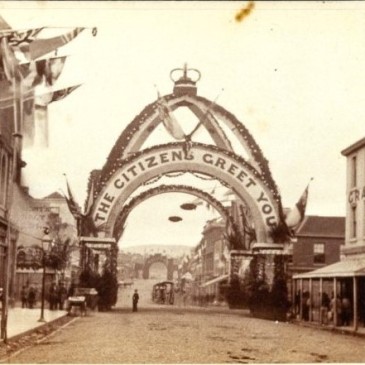Thomas J. Nevin’s studio decor: the plinth
Plinths were standard studio furniture in commercial portraiture of the 1860s-1870s. Not just decorative, they were essentially a solid object at waist height where the standing subject could place a hand to hold themselves steady while waiting a minute or so for exposure of their image on the glass negative. The plinth was a far more attractive proposition for a person standing than the metal headrest holding the back of the neck. There appears to be just one plinth featured in several portraits of children and young adults taken by Thomas J. Nevin in his studio at 140 Elizabeth St. Hobart during the late 1860s-mid 1870s. At least two sides of the plinth differed in small details of decoration. Damage to the plinth visible in these cdv’s include cracks through the top and plaster broken off the corners. … More Thomas J. Nevin’s studio decor: the plinth










































You must be logged in to post a comment.